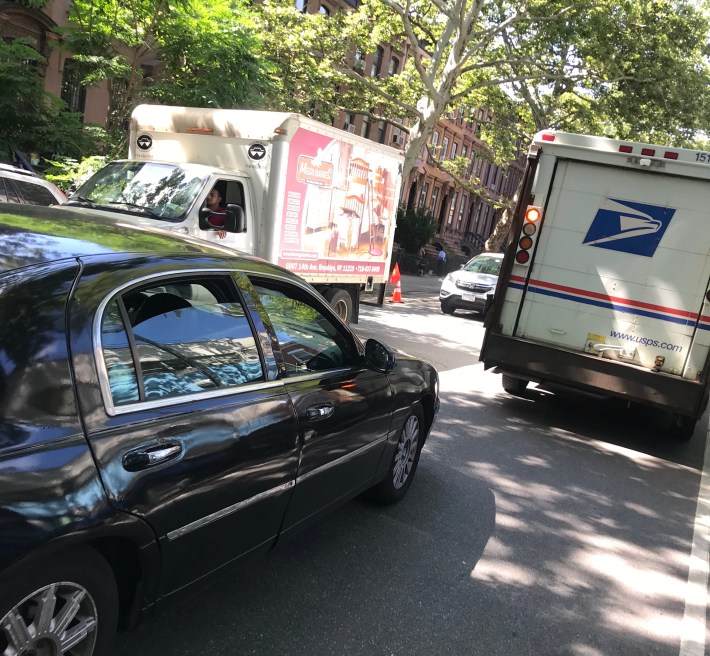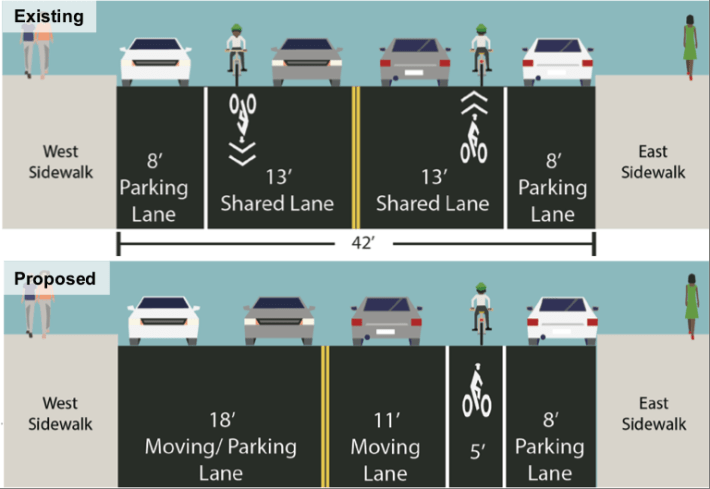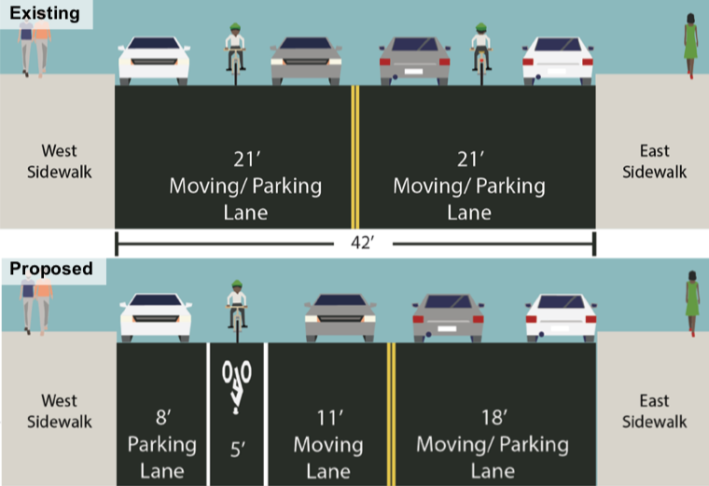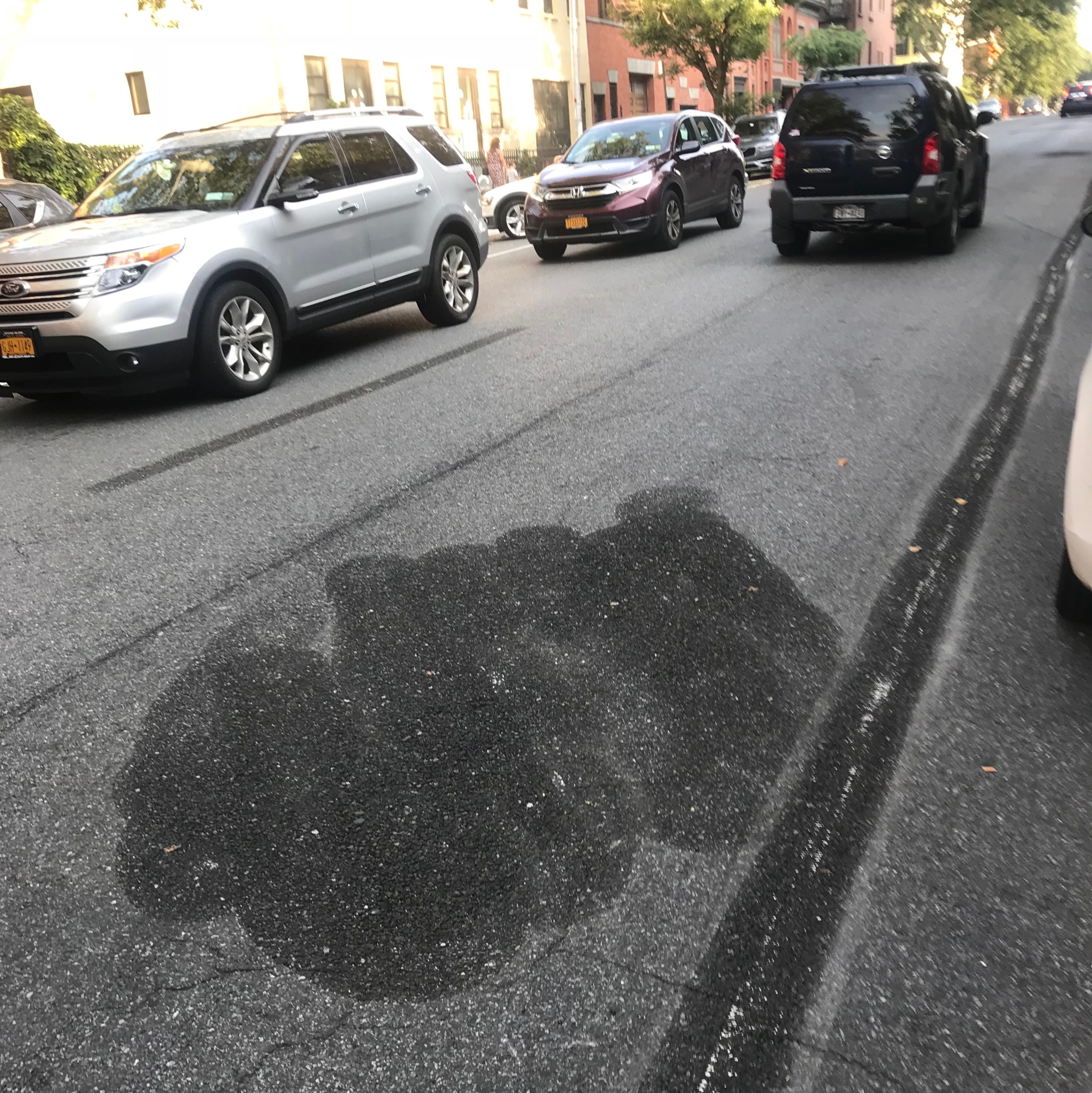Say good-bye to the sharrows on Vanderbilt Avenue in Brooklyn and say hello to...um, not really all that much.
The city Department of Transportation has begun a project to alter cyclist behavior through Fort Greene, scrubbing the shared bike paths on both sides the two-way truck and bus route in favor of a real bike lane on the northbound side of Vanderbilt and a new bike lane on the southbound side of neighboring Clermont Avenue.

Cyclists have complained about Vanderbilt Avenue, which serves 2,000 riders a day, who currently share the critical route with cars, trucks, double-parkers and the hulking B69 bus. Since 2010, 117 cyclists and pedestrians have been injured between Flushing and Atlantic avenues.
DOT officials agree that the current design of Vanderbilt "does not function well for drivers, bus riders, or cyclists." Some cyclists call sharrows "the chevrons of death" because they often appear on roadways that are too narrow to protect bikers from drivers and double-parkers.

But it is unclear whether cyclists will use the new southbound lane on Clermont, which is not a thru-street and would require Park Slope-bound cyclists to detour at some point onto Vanderbilt to continue south. To ease their pain, the city has promised to repaint the existing bike lanes on Vanderbilt between Fulton Street and Atlantic Avenue, which officials say "discourages drivers from driving or stopping in bike lane." (I have plenty of photos — here, here, here and here — that show that drivers have no compunction of parking in green-painted lanes. And that's just today.)
And without enforcement against double-parked trucks — an epidemic on the two-way Vanderbilt — buses will consistently be forced into oncoming traffic. (See photos of that crisis here.)
The plan, which is under construction, is a watered-down version of a two-way protected lane on nearby Clinton Avenue that DOT proposed in 2016 — only to backtrack amid some complaints from residents, including one woman who testified at a hearing that the bike lane was being built for outside "settlers."
A more radical design for Vanderbilt Avenue could have eliminated on-street private car storage to accommodate protected bike lanes on both sides of the 42-foot-wide street. Or the city could have made Vanderbilt and Clermont one-way streets.
“[The plan] can be bolder in terms of pursuing protected bike infrastructure, given ridership,” Community Board 2 member Brian Howald said at a community hearing in June. "There's not enough protected bike lanes in the pipeline for this part of Brooklyn," Howald added this week. "Maybe it's politically difficult, as we saw on Clinton Avenue, but it has to happen. Vanderbilt is one of the most-used streets outside of Manhattan."
Update: After publication, a DOT spokesperson told Streetsblog, "We are open to exploring the feasibility of protected bike lanes in the area. However, this project will provide immediate safety enhancements for all roadway users without any changes to traffic flow, capacity, and parking."








